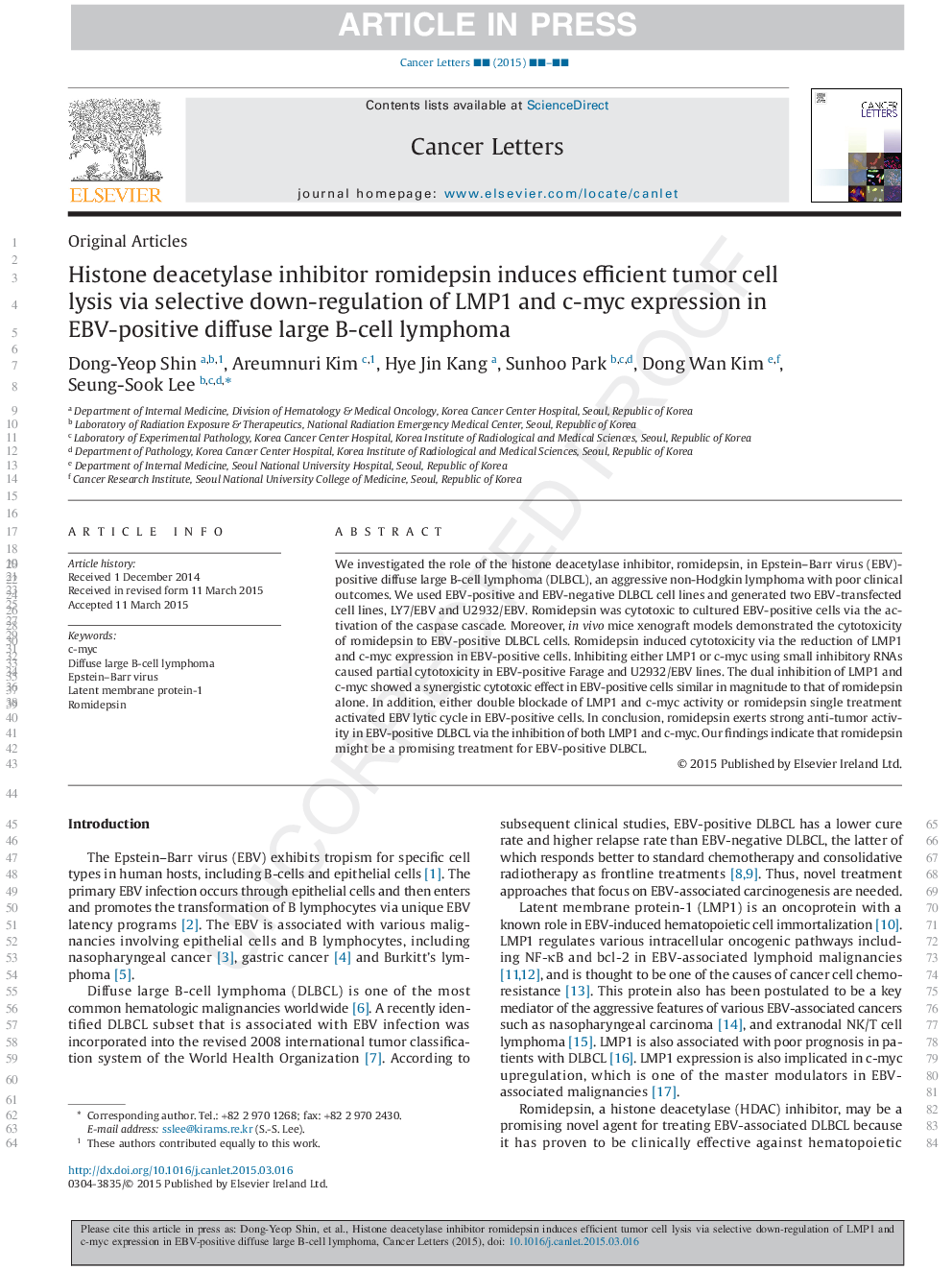| Article ID | Journal | Published Year | Pages | File Type |
|---|---|---|---|---|
| 10899521 | Cancer Letters | 2015 | 9 Pages |
Abstract
We investigated the role of the histone deacetylase inhibitor, romidepsin, in Epstein-Barr virus (EBV)-positive diffuse large B-cell lymphoma (DLBCL), an aggressive non-Hodgkin lymphoma with poor clinical outcomes. We used EBV-positive and EBV-negative DLBCL cell lines and generated two EBV-transfected cell lines, LY7/EBV and U2932/EBV. Romidepsin was cytotoxic to cultured EBV-positive cells via the activation of the caspase cascade. Moreover, in vivo mice xenograft models demonstrated the cytotoxicity of romidepsin to EBV-positive DLBCL cells. Romidepsin induced cytotoxicity via the reduction of LMP1 and c-myc expression in EBV-positive cells. Inhibiting either LMP1 or c-myc using small inhibitory RNAs caused partial cytotoxicity in EBV-positive Farage and U2932/EBV lines. The dual inhibition of LMP1 and c-myc showed a synergistic cytotoxic effect in EBV-positive cells similar in magnitude to that of romidepsin alone. In addition, either double blockade of LMP1 and c-myc activity or romidepsin single treatment activated EBV lytic cycle in EBV-positive cells. In conclusion, romidepsin exerts strong anti-tumor activity in EBV-positive DLBCL via the inhibition of both LMP1 and c-myc. Our findings indicate that romidepsin might be a promising treatment for EBV-positive DLBCL.
Related Topics
Life Sciences
Biochemistry, Genetics and Molecular Biology
Cancer Research
Authors
Dong-Yeop Shin, Areumnuri Kim, Hye Jin Kang, Sunhoo Park, Dong Wan Kim, Seung-Sook Lee,
